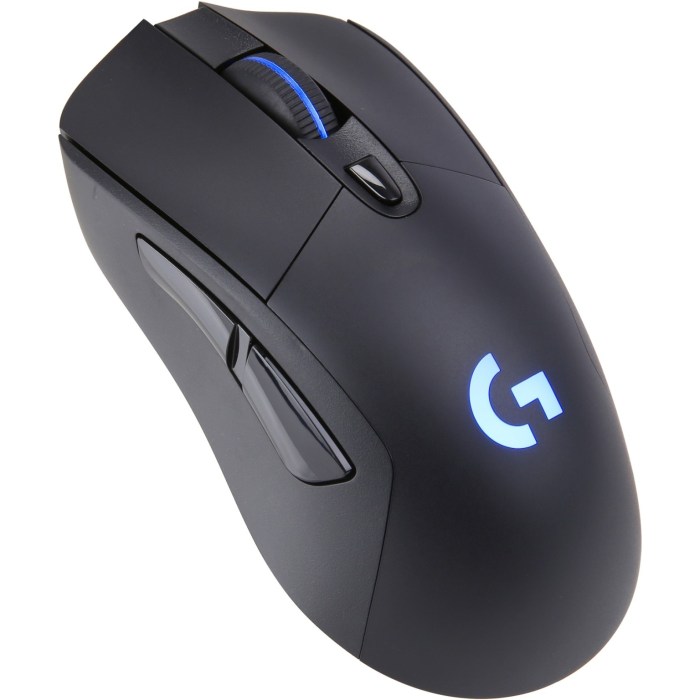Impact on the Mouse Market: Logitech Will Stop Making Mice For Other Companies
Logitech’s decision to stop making mice for other companies could have significant implications for the overall mouse market. This move could lead to increased competition among mouse manufacturers, as well as potential opportunities for other companies to enter the market.
Impact on Competition
Logitech’s decision will likely increase competition among mouse manufacturers. Companies like Razer, SteelSeries, and Corsair may now have a chance to gain market share by offering their own branded mice to companies that previously relied on Logitech. The increased competition could lead to lower prices and more innovative products as manufacturers strive to attract customers.
Opportunities for Other Companies
Logitech’s departure from the OEM mouse market presents an opportunity for other companies to fill the void. Smaller manufacturers, such as those specializing in niche markets like gaming or ergonomic mice, could see an increase in demand from companies looking for alternative suppliers. This could lead to growth and expansion for these companies.
Logitech’s Business Strategy
Logitech’s decision to cease production of mice for other companies signals a strategic shift towards focusing on its own brands. This move, while surprising to some, reflects a calculated business strategy with long-term implications for the company’s growth and market dominance.
Reasons for Focusing on Own Brands
Logitech’s decision to prioritize its own brands is driven by a combination of factors, aiming to solidify its market position and maximize profitability.
- Increased Brand Recognition and Loyalty: By concentrating on its own brands, Logitech can invest more resources in marketing and branding, fostering stronger customer relationships and loyalty. This translates to higher sales and greater market share.
- Control Over Product Development and Quality: Logitech gains complete control over the design, manufacturing, and quality of its products. This allows for greater innovation and customization, meeting specific customer needs and differentiating its products in a competitive market.
- Enhanced Profit Margins: Producing and selling its own branded products allows Logitech to capture higher profit margins compared to manufacturing for other companies. This increased profitability can be reinvested in research and development, further strengthening its competitive edge.
- Diversification of Revenue Streams: By focusing on its own brands, Logitech diversifies its revenue streams, reducing reliance on a single segment of the market. This strategy mitigates risk and ensures greater financial stability.
Potential Long-Term Benefits
Logitech’s strategic shift holds significant long-term benefits, positioning the company for continued success in the evolving technology landscape.
- Strengthened Brand Portfolio: By focusing on its own brands, Logitech can develop a comprehensive and differentiated product portfolio, catering to diverse customer segments and needs. This strategy allows for a broader market reach and greater market share.
- Enhanced Innovation and Product Differentiation: With complete control over product development, Logitech can invest in cutting-edge technologies and innovative designs. This focus on innovation helps differentiate its products, attracting customers seeking advanced features and functionality.
- Improved Customer Experience: By directly managing its products, Logitech can optimize the customer experience, from design and manufacturing to support and warranty services. This enhanced customer experience fosters loyalty and positive brand perception.
- Leadership in the Tech Industry: By prioritizing its own brands and investing in innovation, Logitech can solidify its position as a leading player in the technology industry. This leadership position translates to greater market influence and opportunities for future growth.
Implications for Consumers
Logitech’s decision to cease manufacturing mice for other companies will have significant implications for consumers who rely on their products. This move will impact the availability and pricing of Logitech mice, and it might also influence consumer preferences towards alternative brands.
Impact on Availability and Pricing
Logitech’s withdrawal from the OEM market could lead to a decrease in the availability of Logitech mice, particularly for specific models or niche applications. This is because manufacturers who previously relied on Logitech for their mice might be forced to seek alternative suppliers, potentially leading to longer lead times and reduced availability.
Additionally, the price of Logitech mice might increase as the company focuses solely on its own branded products. This could be due to factors such as increased production costs and reduced competition in the market.
For example, if a manufacturer previously sourced Logitech mice for their gaming laptops, they might have to explore other options, which could lead to higher costs and potentially lower quality.
Shift in Consumer Preferences
Logitech’s decision could also lead to a shift in consumer preferences towards alternative brands. Consumers might be more inclined to explore other brands that offer comparable features and quality at competitive prices.
For instance, if a consumer looking for a high-performance gaming mouse finds that Logitech’s prices have increased significantly, they might consider exploring brands like Razer, SteelSeries, or Corsair, which are known for their gaming peripherals.
Future of Mouse Manufacturing
Logitech’s decision to cease manufacturing mice for other companies has significant implications for the mouse market, potentially leading to a reshaping of the industry. This move signifies a shift in the landscape of mouse manufacturing, where Logitech’s focus is now solely on its own branded products.
Impact on the Mouse Market
This decision could have several consequences for the mouse market:
* Increased Competition: With Logitech exiting the OEM market, other manufacturers will have a greater opportunity to fill the void. This could lead to increased competition, potentially driving down prices and encouraging innovation in the mouse market.
* Rise of Specialized Manufacturers: Smaller, specialized manufacturers could emerge, catering to niche markets or offering unique features not readily available from larger brands.
* Potential for Consolidation: As the market adjusts, some manufacturers may consolidate, leading to fewer players with larger market share.
* Increased Focus on Brand Identity: With Logitech focusing on its own brand, other manufacturers will need to differentiate themselves through branding, design, and features to attract customers.
Hypothetical Scenario in the Next 5 Years
In the next five years, the mouse market could evolve in several ways:
* Rise of Gaming Mice: Gaming mice are already a significant segment, and this trend is likely to continue. Manufacturers will focus on developing advanced features like high DPI, customizable buttons, and ergonomic designs.
* Integration of New Technologies: We could see the integration of new technologies like haptic feedback, gesture recognition, and AI-powered customization.
* Sustainability and Eco-Friendly Designs: Consumers are becoming increasingly conscious of sustainability, and manufacturers will likely offer eco-friendly options made from recycled materials.
* Expansion of Vertical Mice: Vertical mice, designed to promote ergonomic posture, are gaining popularity. This trend could continue, with manufacturers offering a wider range of vertical mouse options.
Comparison with the Current Landscape
The current mouse market is characterized by a diverse range of options, from budget-friendly models to high-end gaming mice. Logitech’s decision to exit the OEM market could lead to a more fragmented landscape, with a greater emphasis on brand identity and specialized offerings. The market could become more competitive, with manufacturers vying for market share through innovation, features, and pricing.
Innovation and Development
Logitech’s decision to focus solely on its own-branded mice presents a unique opportunity for the company to invest heavily in innovation and development. This shift allows Logitech to explore new technologies, experiment with unconventional designs, and push the boundaries of what a mouse can be.
Potential Areas of Innovation
Logitech can leverage its expertise in ergonomics, sensor technology, and software integration to create mice that are not only functional but also intuitive, personalized, and future-proof.
- Advanced Ergonomics: Logitech can invest in research and development to create mice that adapt to individual hand sizes and grip styles, minimizing strain and maximizing comfort during extended use.
- Enhanced Sensor Technology: Logitech can explore new sensor technologies, such as AI-powered tracking, that offer greater precision, responsiveness, and surface compatibility.
- Personalized Software Integration: Logitech can develop software that allows users to customize mouse settings, assign macros, and create personalized profiles for different applications and games.
- Multi-Device Compatibility: Logitech can create mice that seamlessly switch between multiple devices, including PCs, laptops, tablets, and smartphones.
- Sustainable Design: Logitech can focus on using recycled materials and eco-friendly manufacturing processes to create sustainable mice that minimize environmental impact.
Leveraging Expertise for New Mouse Technologies, Logitech will stop making mice for other companies
Logitech can leverage its existing expertise in sensor technology, software development, and user interface design to develop new and improved mouse technologies.
- Haptic Feedback: Logitech can integrate haptic feedback technology into mice to provide users with tactile sensations that enhance immersion in games and creative applications.
- Gesture Recognition: Logitech can develop mice that use gesture recognition technology to allow users to control their computers with intuitive hand movements.
- Augmented Reality Integration: Logitech can explore the integration of augmented reality technology into mice to provide users with interactive experiences that enhance productivity and entertainment.
Future Mouse Designs and Features
Logitech can explore unconventional designs and features that push the boundaries of what a mouse can be.
- Modular Mice: Logitech can create mice with modular components that allow users to customize their mice based on their specific needs and preferences.
- Wireless Charging: Logitech can integrate wireless charging technology into mice to eliminate the need for batteries and cords.
- Integrated Biometric Sensors: Logitech can integrate biometric sensors into mice to provide users with personalized experiences and enhanced security features.
Logitech will stop making mice for other companies – Logitech’s decision to stop making mice for other companies has sparked a wave of speculation and analysis, leaving us with more questions than answers. The future of the mouse market remains uncertain, but one thing is clear: this move has the potential to reshape the industry in significant ways. As we move forward, it will be interesting to observe how the market reacts, how consumers adapt, and what innovations emerge from this shift in the landscape.
Logitech’s decision to stop making mice for other companies might seem like a big deal, but let’s be real, it’s just one less thing to worry about. Meanwhile, OnePlus is making waves with their promise to deliver OxygenOS and Lollipop updates before March is over. oneplus to deliver oxygenos and lollipop update before march is over It’s all about staying ahead of the curve, and Logitech is clearly taking a different approach.
So, while we might miss their mice, we’ll just have to find other ways to get our click on.
 Standi Techno News
Standi Techno News

